Russia’s Dual Maritime Gambit: Corvette Boikiy in Nigeria and Cargo Ship Siyanie Severa in Bata Signal Expanding Naval Diplomacy in West Africa
- RFN- OS
- Jun 1
- 3 min read
Recent Russian naval movements involving a Steregushchiy-class corvette Boikiy (532) and the merchant vessel SIYANIE SEVERA (IMO: 9250385, General Cargo Ship) highlight Moscow’s growing use of integrated maritime operations—combining military and civilian assets—to project power and reinforce strategic partnerships in the Gulf of Guinea.
A Corvette and a Cargo Ship: Strategic Messaging at Sea
In recent days, military analysts have observed a notable Russian naval maneuver off the West African coast. A Steregushchiy-class corvette, a modern multirole surface combatant optimized for littoral operations and anti-surface/anti-submarine warfare, made a port call in Nigeria—a clear diplomatic signal
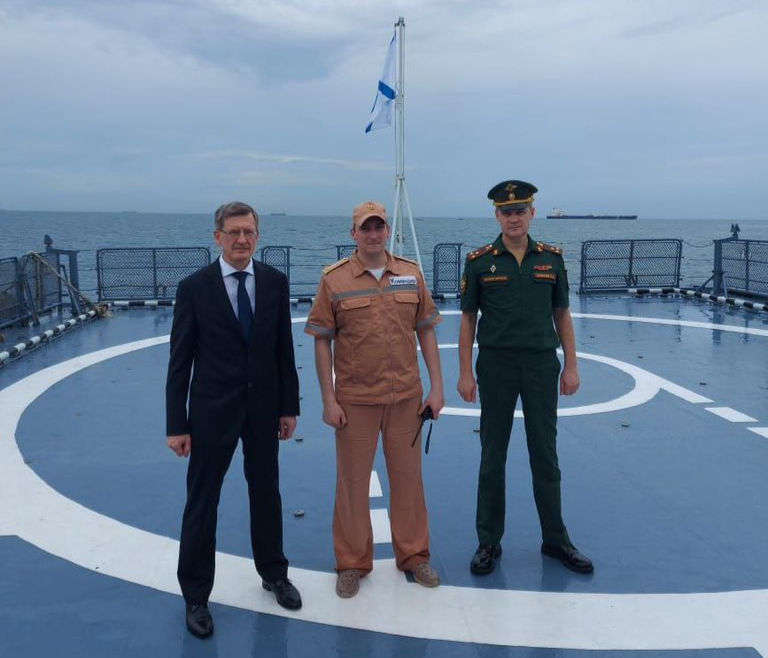
On May 29, the Ambassador of the Russian Federation to the Federal Republic of Nigeria, A.L. Podelyshev, alongside military attaché S.N. Sivachev, visited the Steregushchiy-class corvette Boikiy, anchored in Nigerian territorial waters near Lagos. During the visit, the ship’s commanding officer conducted a detailed tour, briefing the delegation on the vessel’s advanced combat capabilities and operational role, underscoring the strategic significance of the deployment in strengthening Russo-Nigerian military ties.
Post : x.com
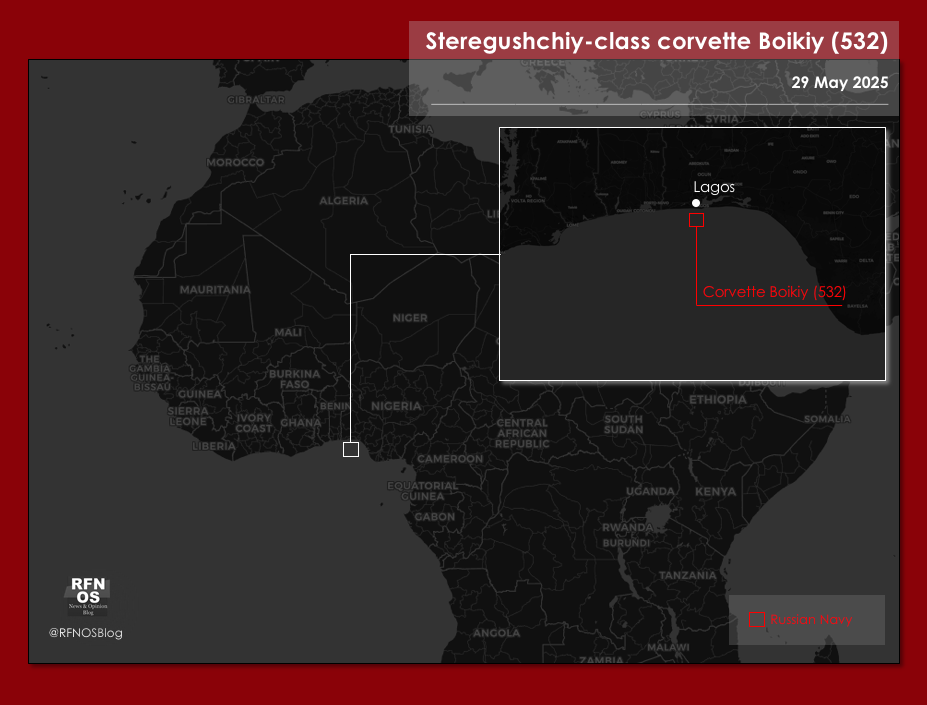
Simultaneously, the Russian-flagged merchant vessel Siyanie Severa, reportedly under naval escort by the same corvette, previously docked at Bata, Equatorial Guinea.
The Russian-flagged merchant vessel Siyanie Severa (IMO 9250385) was docked in the port of Bata, Equatorial Guinea, from 28 to 30 May 2025. There is no public confirmation of whether it loaded or unloaded any military or logistics materials during its stay.
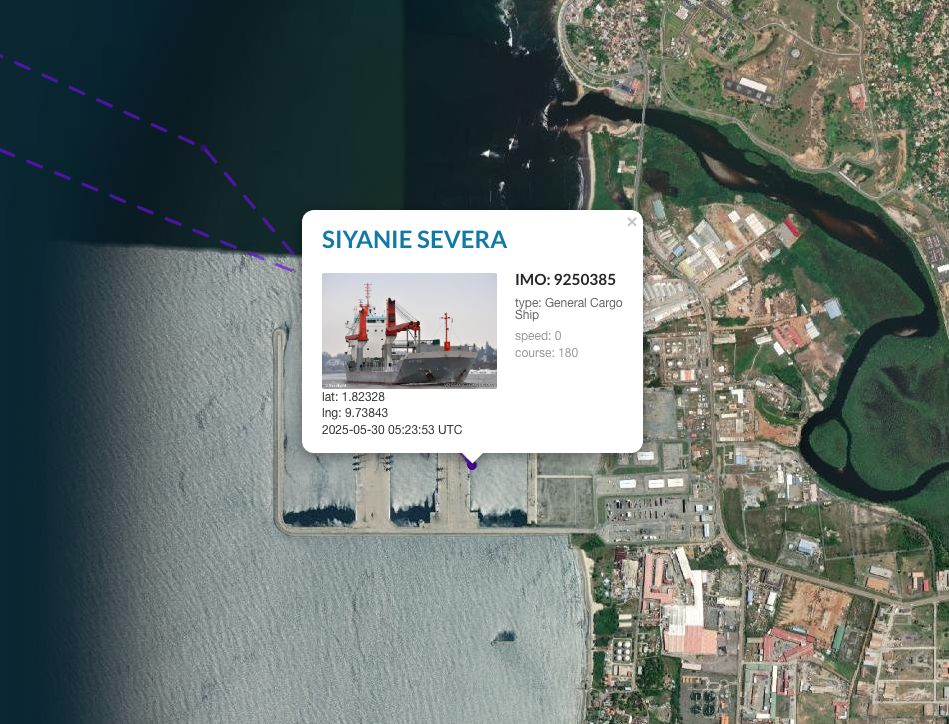

After departing Bata, the vessel headed to Lagos, Nigeria, with an estimated arrival time (ETA) of 12:00 local time on June 2. The Siyanie Severa is most likely to join the Steregushchiy Boikiy-class corvette, currently operating near Nigerian territorial waters, suggesting a continuation of the joint maritime operation.
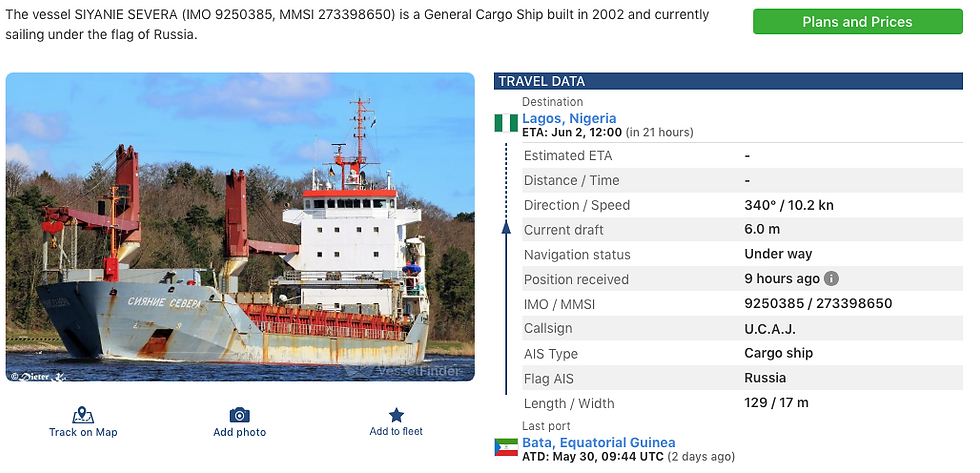
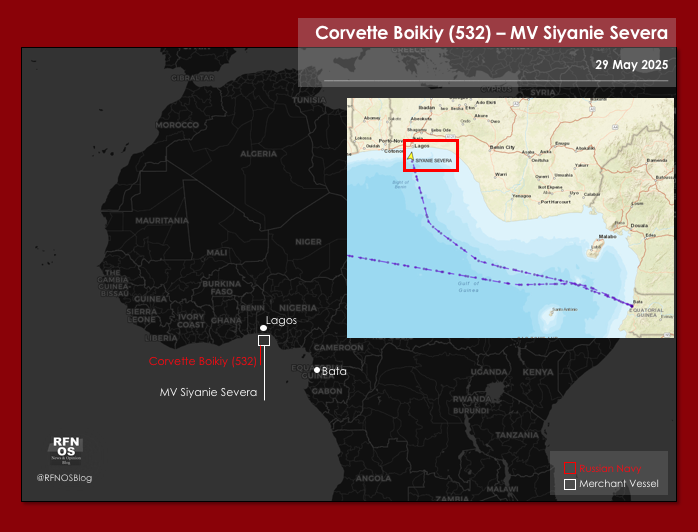
Intelligence sources suggest that during the stop in Bata, the vessel likely offloaded military hardware and logistics equipment, potentially destined for Russian private military contractors (PMCs) or local allied forces. This indicates not only a military logistics operation but also a strategically orchestrated maritime presence in an increasingly contested region.
Naval Diplomacy: The Fleet as an Extension of Statecraft
Russia’s strategic use of combined naval and commercial assets fits into a broader doctrine of maritime diplomacy, whereby the navy acts as a forward-deployed instrument of state power. This model has been used previously in the Eastern Mediterranean, the Black Sea, and more recently, the Red Sea.
The Nigerian port visit by a Russian combat vessel—likely coordinated at high political levels—serves as a maritime signaling operation, underscoring the evolving bilateral defense cooperation between Moscow and Abuja. In an era where Russia seeks alternative partnerships beyond Western-aligned blocs, Nigeria emerges as a regional pivot—economically powerful, militarily relevant, and politically significant.
The warship’s presence thus constitutes more than just a routine port call: it is a naval diplomacy mission, conveying both commitment and capability.
Bata: A Tactical Foothold on the Gulf of Guinea
The port of Bata, in Equatorial Guinea, has gained prominence as a logistics node in Russia’s growing maritime posture in Central and West Africa. Though lacking in scale compared to major global ports, Bata offers strategic depth, plausible deniability, and limited foreign oversight—making it ideal for low-visibility military resupply and forward staging.
The docking of Siyanie Severa—reportedly transporting armored vehicles, materiel, and possibly C4ISR assets—suggests an effort to pre-position capabilities in the region. These assets could support Russian-aligned PMCs, now restructured post-Wagner under official Kremlin control, who serve as unofficial force multipliers in states with unstable governance or anti-Western orientations.
This logistical operation likely included the use of roll-on/roll-off capabilities, containerized arms shipments, and discreet offloading under the cover of dual-use cargo classification—tactics consistent with Russian hybrid maritime strategy.
Strategic Outlook: Maritime Access as a Force Multiplier
The deployment of Russian naval assets to African waters—especially in a combined civilian-military configuration—illustrates a long-term strategic pivot. Moscow is leveraging sea lines of communication (SLOCs) to project influence where Western presence is either reduced or diplomatically constrained.
With Bata as a potential logistics hub and Nigeria as a high-value diplomatic partner, Russia appears to be establishing a blue-water vector for influence in the Gulf of Guinea. This corridor enables secure maritime supply chains, presence operations, and potential contingency deployments.
In this paradigm, merchant vessels no longer merely carry goods—they deliver geopolitical payloads. Warships, in turn, act not just as deterrents but as platforms for bilateral engagement and power projection.

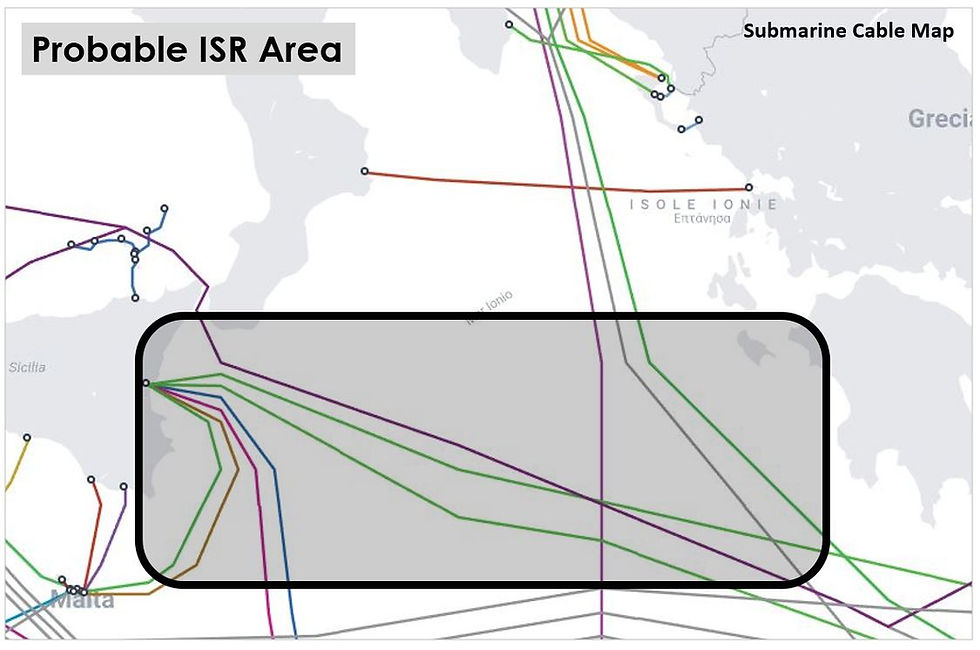

Comments